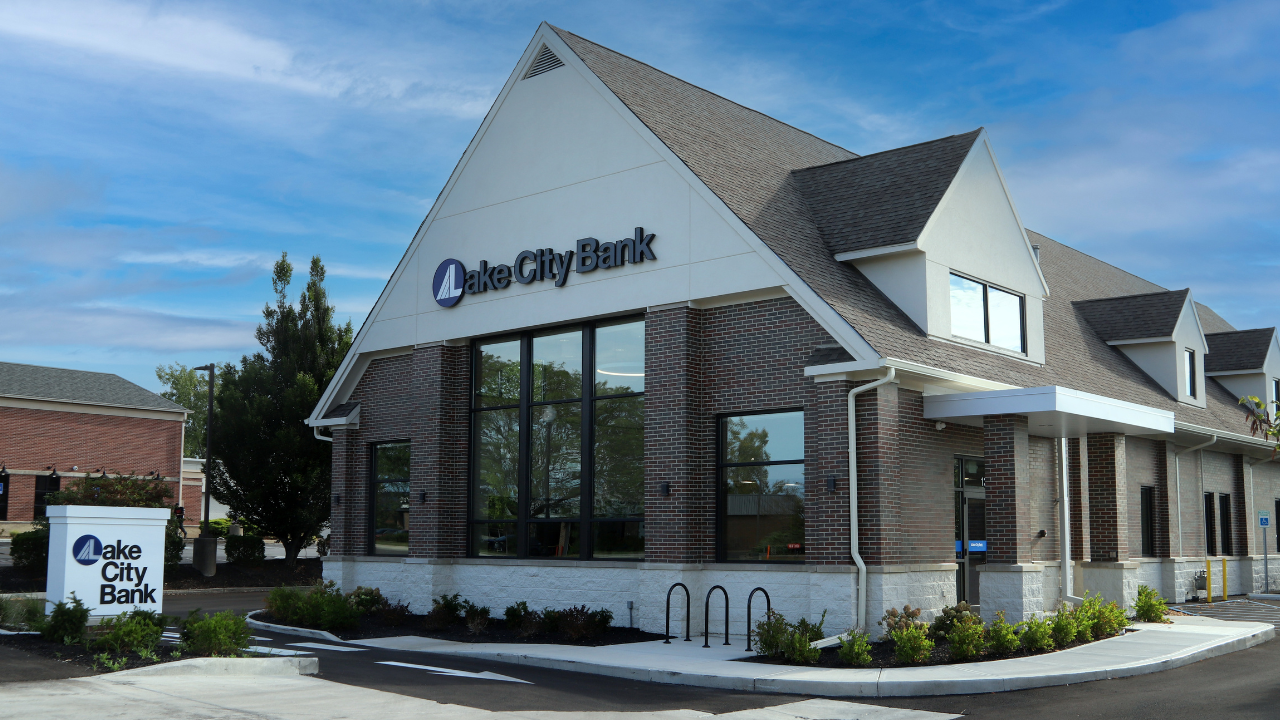Repurposing for the Future: Making the Most of Our Brick-and-Mortar

Lake City Bank’s Carmel, Indiana office is one of many locations created by repurposing an existing building—making smart use of resources while maintaining strong community connections.
At Lake City Bank, recycling takes on a whole new meaning when it comes to buildings. For decades, the bank has prioritized repurposing existing facilities over constructing new ones, embodying its commitment to sustainably managing resources.
“We integrate eco-friendly practices into every aspect of our operations, including our facilities,” said Lake City Bank President Kristin Pruitt. “When it’s possible and makes sense strategically, we prefer to repurpose a building rather than build a new one.”
A prime example is the bank’s headquarters building in Warsaw. Originally built in 1961 as the downtown Warsaw office, it underwent a significant expansion in 1972 with the addition of a second story to increase office space. Subsequent remodels to this building and others have ensured that the bank’s technology, HVAC and energy systems remain up to date. Across all renovation and construction projects, the bank has replaced older lighting fixtures with LED lighting, many of which include motion sensors to further conserve energy—resulting in a 50% reduction in lighting energy consumption.
The headquarters anchors the bank’s downtown campus, which comprises seven buildings and houses approximately 270 employees. Since 2020, the bank has invested around $30 million to modernize the downtown campus and its 12 Kosciusko County branches. The latest addition, the Innovation and Technology Center, was purchased for renovation in the fall of 2024.
“Our presence in downtown Warsaw matters on several levels,” said David M. Findlay, Chairman and Chief Executive Officer. “Lake City Bank started here in 1872, and we plan to stay here. As a community bank, we are committed to contributing to the vitality of downtown Warsaw. Having our operations, technology and support teams together on one campus fosters in-person connections, which we believe leads to better outcomes for both the bank and our customers.”
The bank’s reuse-recycle philosophy extends to its branch buildings as well. Over a third of the bank’s 54 offices are located in upcycled existing buildings. This approach not only reduces costs compared to new construction but also minimizes landfill waste from building demolition.
“Our strategy for adapting buildings for our branches is simple,” said Executive Vice President and Chief Retail Banking Officer Stephanie Leniski. “We aim to be centrally located in the communities we serve. Often, we find a great existing location and adapt it rather than build a new facility. It’s a win all the way around because we help preserve a community’s architectural character and we add a great location to our branch network.”
The bank considers future growth and needs before starting any building or remodeling project.
“We build with growth in mind,” said Vice President and Director of Facilities and Security Rich Hoover. “Planning space for additional employees and functionality helps us react quickly when the need to expand arises.”
Managing resources through remodeling and reusing existing facilities is just part of Lake City Bank’s commitment to sustainability. The bank’s energy efficiency initiatives, paperless enhancements, and recycling programs touch every area of the company. Read more here.



